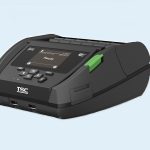Industry Talk
Regular Industry Development Updates, Opinions and Talking Points relating to Manufacturing, the Supply Chain and Logistics.Tariff vs Tax vs Duty: Understanding Imported Good Costs

Through globalisation and the boom of ecommerce, companies are now increasingly likely to conduct business abroad.
But, when importing goods from abroad, there are many aspects of the process to consider. One of the most intimidating, at first, is the sheer variety and complexity of the rules surrounding taxes and levies of various kinds.
This article sets out to help by explaining the differences between tariff versus tax versus duty when you’re importing goods into the UK.
Tariff
What is a tariff?
A tariff is a direct tax levied on particular classes of imported goods. It’s generally calculated as a percentage of the value of the goods in question, and the importer must pay this.
The legalities of international trade can get quite complex. Tariff rates vary widely depending on what you’re importing and from where. They will also be subject to trade agreements between the origin and importing countries.
Purpose of tariffs
The primary purpose of having tariffs is to regulate trade, generally to protect domestic industries. When a government imposes tariffs on imported goods, it naturally reduces the amount of imported products, thus giving a boost to domestic producers. Of course, the government also enjoys the benefit of raising funds this way.
There’s also an element of international politics at play. Governments often use tariffs (or the threat of them) to exert influence in trade relations with other countries. In international negotiations—even ones that aren’t directly trade-related—they’re sometimes used as a bargaining chip to extract a desired outcome.
Tariff rates and how they are determined
Since January 2021, when the post-Brexit transition was implemented, all goods being imported to the UK have been subject to the UK Global Tariff (except for those that qualify for an exemption).
Thanks to the fact the UK and EU agreed to the Trade and Cooperation Agreement, no tariffs are imposed on trade between these 2 economic regions. But, that doesn’t mean there are no taxes or duties to pay.
Of relevance here is the question of tariff rate quotas. You can import specified items, such as poultry, cereals, or olive oil, at a lower duty rate than would usually apply up to a capped amount. To get a license to do this, importers must provide evidence that they are regularly importing a minimum quantity.
Otherwise, tariff rates are set depending on several factors, including the nature of the goods being imported and which country you’re importing them from.
The calculation can get quite complicated if you’re buying various types of goods. So it’s best to use a dedicated resource management tool to make sure you’re covering everything.
This is a reason businesses are increasingly adopting Enterprise Resource Planning (ERP) tools. If you operate an ecommerce business that ships internationally, you’re likely to have to navigate a complex tariff landscape.
But by implementing ERP in ecommerce, you can integrate all of your business processes, such as sales, accounting, and distribution, on one platform. Moreover, you can easily manage shipping logistics, track your imports, and calculate taxes based on different locations.
Because all your critical business data is centralised and accessible to multiple teams across your organisation, it simplifies the task of assigning tariffs accurately to different goods.
Impact of tariffs on imported goods costs
Unsurprisingly, tariffs tend to cause the price of imported goods to increase. Granted, that can help domestic producers compete. But overall, governments tend to wield their tariff power carefully. After all, no one wants to get involved in a messy trade war.
Tax
What is tax in the context of imported goods?
Implementing cost-effective international ecommerce means factoring import taxes into your budget. While the rules around these vary widely from country to country, they’ll mostly take the form of a levy imposed by the national government on the value of imported goods.
Types of taxes applicable to imported goods
The main tax that applies to UK imports is VAT. Note that the imports you must pay this on depend on the part of the UK you operate in.
VAT is due on the value of all goods (except for gifts worth £39 or less) coming from:
- Outside the UK, if you’re in Great Britain.
- Outside the UK and EU, if you’re in Northern Ireland.
The political situation around Northern Ireland’s status regarding the EU could develop further, but these are the current rules. It’s crucial to keep an eye on how political factors are changing. They can significantly impact the cost of importing as well as other business-sensitive issues, such as supply-chain risk.
Tax rates and how they are determined
VAT is charged on the value of the goods themselves as well as any postage, packaging, and insurance costs you’ve incurred and duty you’ll pay. In other words, it’s the final part of calculating the total amount due.
You’ll pay VAT on:
- Value of the goods.
- Any duty placed on the goods.
- Cost of delivery.
- Customs brokerage fees.
- Inspection charges.
- Demurrage (storage costs before goods are cleared by customs).
- Additional storage charges (after customs clearance).
Currently, the standard VAT rate in the UK is 20% for most goods. But, there are some exceptions.
A small number of goods, such as child car seats, are subject to a 5% rate, while many more are zero-rated. This latter category includes most food and drink for human consumption, with some specific exceptions, such as confectionery and mineral water.
Once again, there are some differences between the situation in Northern Ireland and the rest of the UK. Some goods that are zero-rated for most of the UK attract a 5% VAT liability if you’re importing them to Northern Ireland. These are mostly energy-related goods, such as solar panels and ground-source heat pumps.
Impact of taxes on imported goods costs
Of course, additional fees make importing goods more expensive. However, paying VAT is often a standard cost for most businesses, even those that operate solely on a domestic basis.
Of all the costs associated with importing goods, this one is probably the simplest with the least impact.
Duty
What is duty?
Customs duty is an indirect tax levied by the government on the consumer. It applies when you import goods across an international border. It’s paid by the individual or company whose name is on the import declaration form when the goods enter the country.
Purpose of duties on imported goods
In terms of their purpose, duties are quite similar to tariffs. They aim to protect local industry by raising the cost of doing business via imports to offset cheaper manufacturing costs abroad.
Duty rates and how they are determined
In the UK, you’ll pay customs duties when importing:
- Excise goods, which includes tobacco and alcohol products
- Non-excise goods valued at over £135
To calculate how much customs duty you need to pay, look up the code for the commodity you’re importing. You’ll need to have the following details to hand:
- Product type
- What the product is used for
- Product materials
- How the product is produced
- How the product is packaged
You can find these codes using the Trade Tariff tool on the HMRC website. Remember the total cost you’ll pay will also depend on the goods’ country of origin.
Impact of duties on imported goods costs
As with tariffs, import duties can make importing goods considerably more expensive. Again, this is deliberate on the part of governments everywhere as they try to level the playing field for domestic operators.
How tariff, tax, and duty collectively affect imported goods costs
For companies that regularly import goods, tariffs, taxes, and duty can collectively constitute a major operating expense. But the potential cost of getting it wrong is far worse. You could be subjected to large fines or even have your goods seized.
So take advantage of expert advice to understand the differences between tariff versus tax vsersu duty, and what your obligations are. Make it a priority to have all of your departments implement joined-up thinking on import costs so that everyone is on the same page.
The truth is that it’s crucial to understand how all kinds of import levies will impact your business, not only in terms of how much you’ll have to pay but also the potential knock-on effects on your customers. This, in turn, can have further implications for your overall business costs.
To avoid any unexpected surprises, these costs can be carefully budgeted using Sage ERP software, which helps you monitor your data in real-time. Because all of your critical business information is centralised, it’s much easier to achieve full compliance with all the import tariff, tax, and duty rules across your organisation as a whole.
Once you’re confident with your finance data, you can also consider using customs software, like CustomsPro. Software like this can help you to navigate the customs process and correctly fill out the right paperwork. By combining these types of software, you can be confident that you won’t have any issues, leaving you to focus on your business.
Final thoughts: Achieving compliance
Although the import tax and duty landscape is complex, you can navigate it successfully.
The main consideration is to keep yourself informed. As long as you are aware of the costs in advance, you’ll be able to work them into your cash flow planning and make sure exported goods smoothly move through your supply chain.
Remember to seek expert advice to guarantee that you remain compliant and utilise the digital tools at your disposal.















